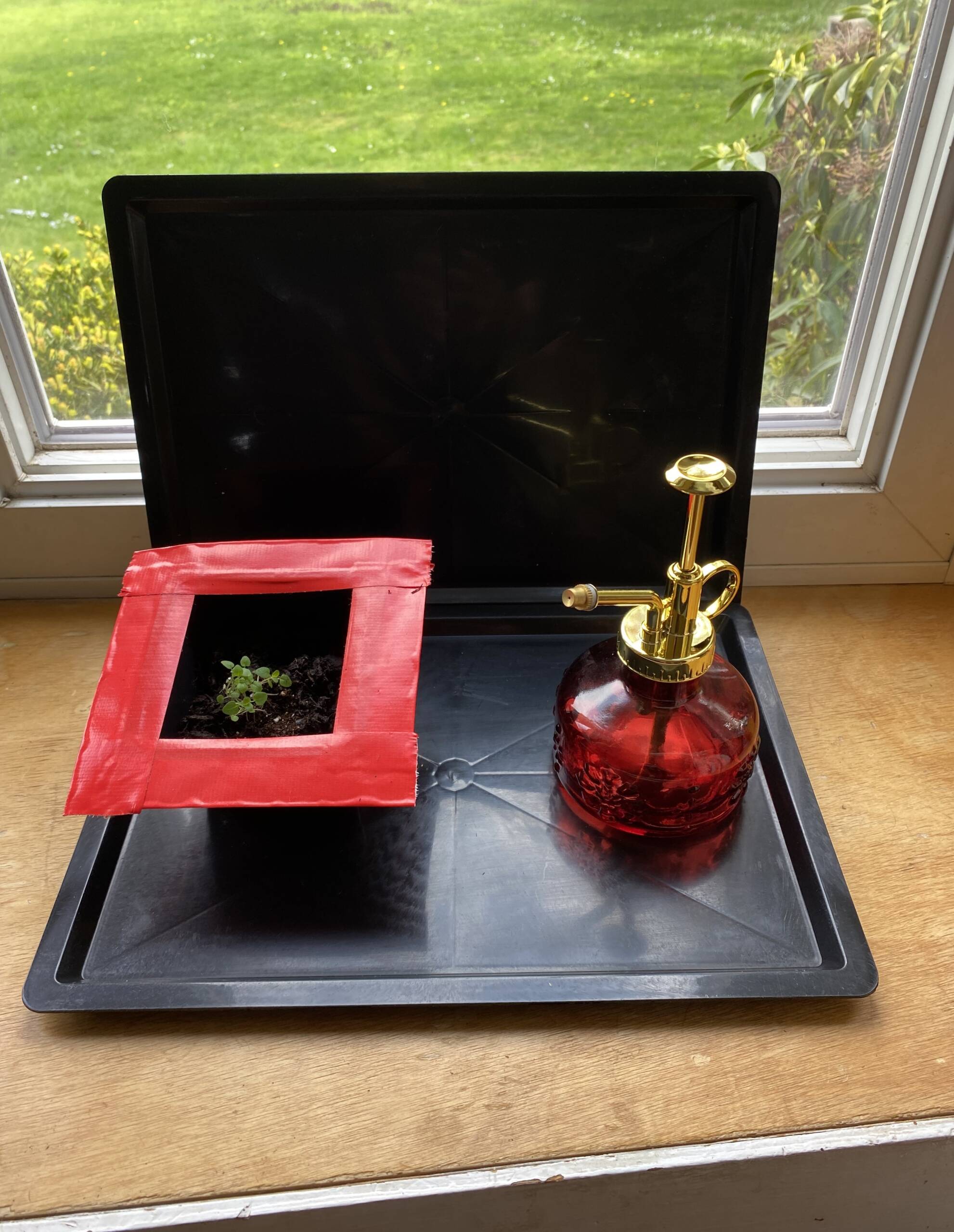In the realm of education, creating inclusive environments that cater to the diverse needs of students is paramount. Sensory gardens have emerged as valuable tools, particularly for students with visual impairments and those facing multiple challenges. This lesson plan explores the benefits of sensory gardens and offers practical insights for teachers looking to integrate this enriching experience into their classrooms.
Pre-teach
It can help to intentionally pre-teach the concepts of objects and materials that are used in sensory gardens to make them meaningful for your students. Spring and summer are great seasons to incorporate a sensory garden into the classroom because the world is blooming and students can make those real life connections. It does not take a lot of time to pre-teach the garden concepts you want to include but it has a huge impact. Using a topic box with garden tools, reading books, bringing in plants, and visiting a garden or flower bed outside the school are all ways to introduce these concepts.
Cindy Reed-Brown created an exemplary garden book out of objects that brought real meaning to her student who was working with plants in class. Her book shows how real objects can be both visually and tactually accessed. The book format lends itself to be available for review frequently before or after lessons relating to your classroom sensory garden. Books can also be shared with home so students can read with their family and share that experience. In the photos below you can see the variety of objects chosen thoughtfully to cover the gardening topic.
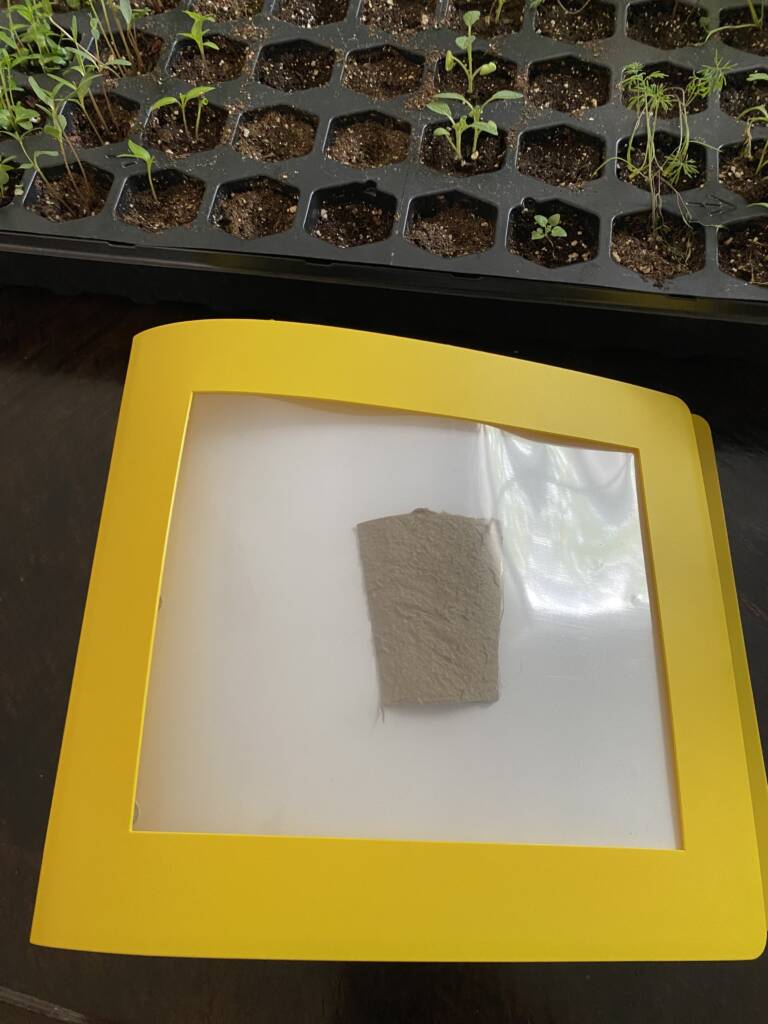
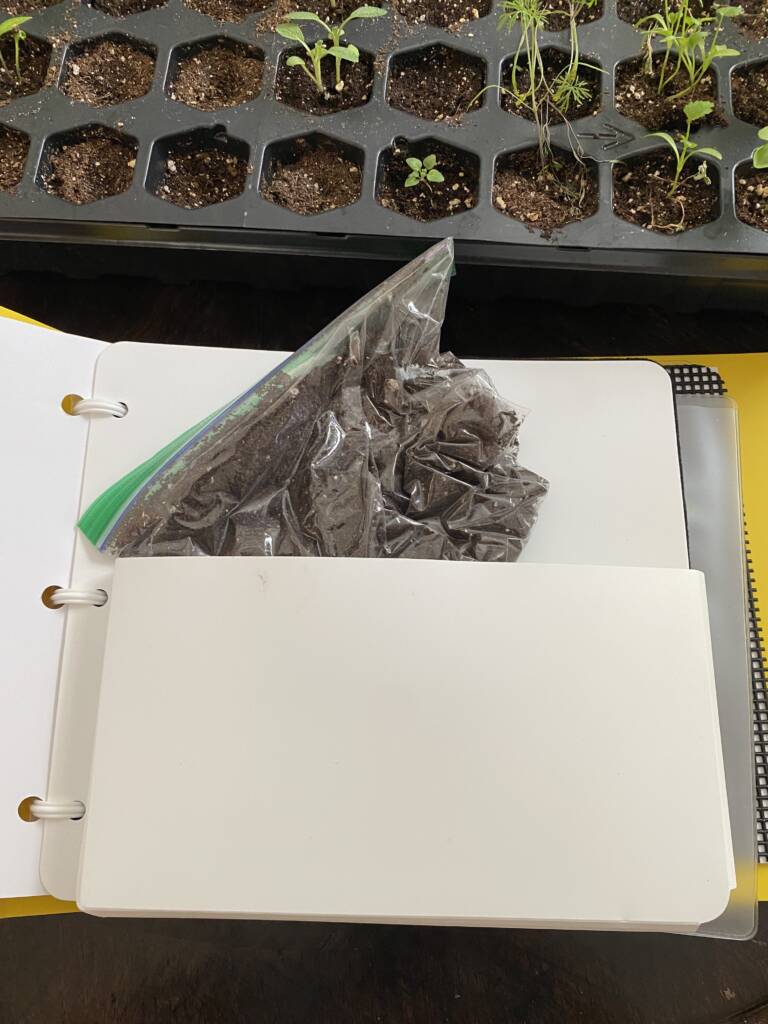
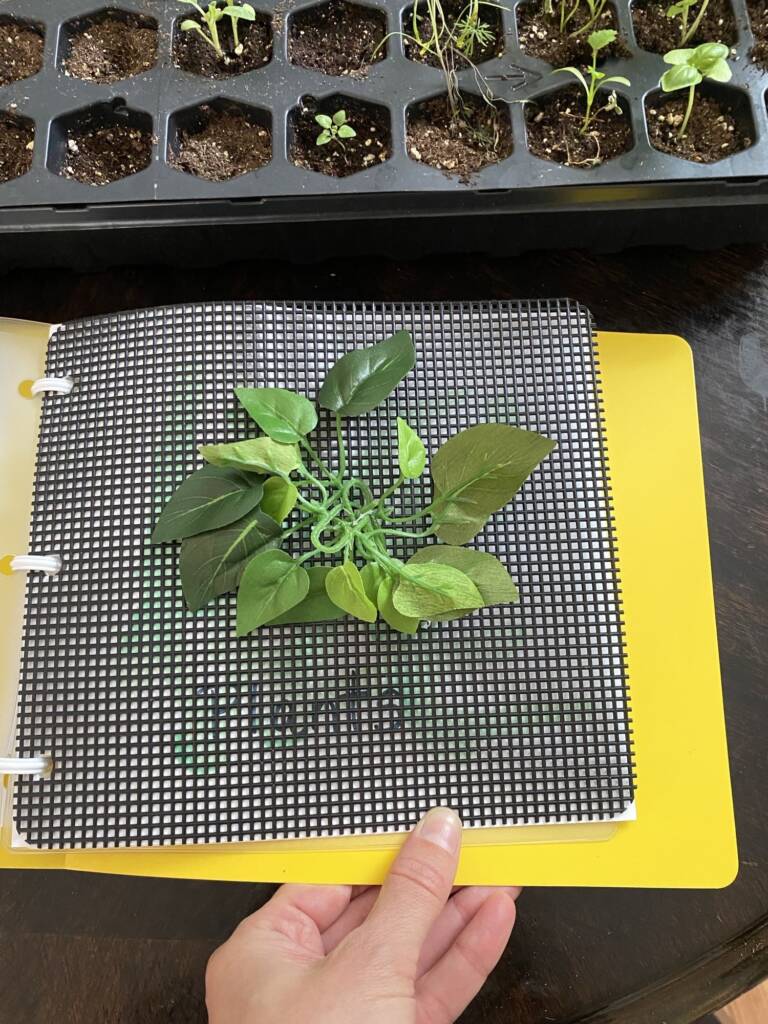
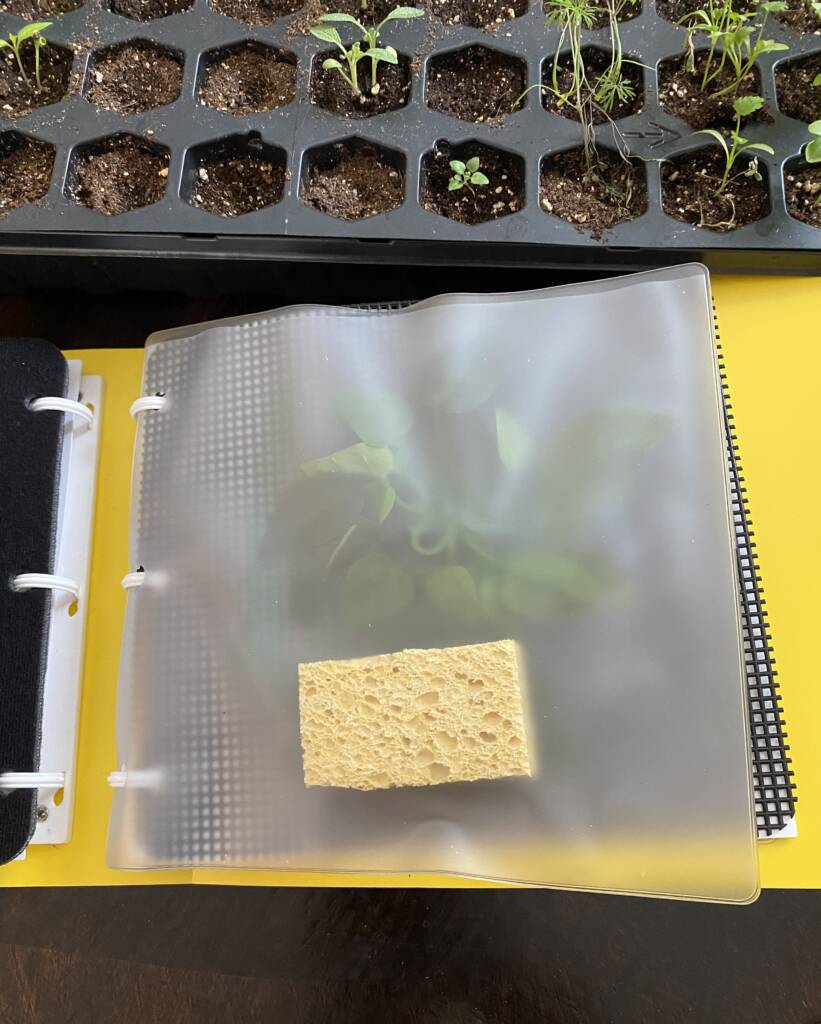
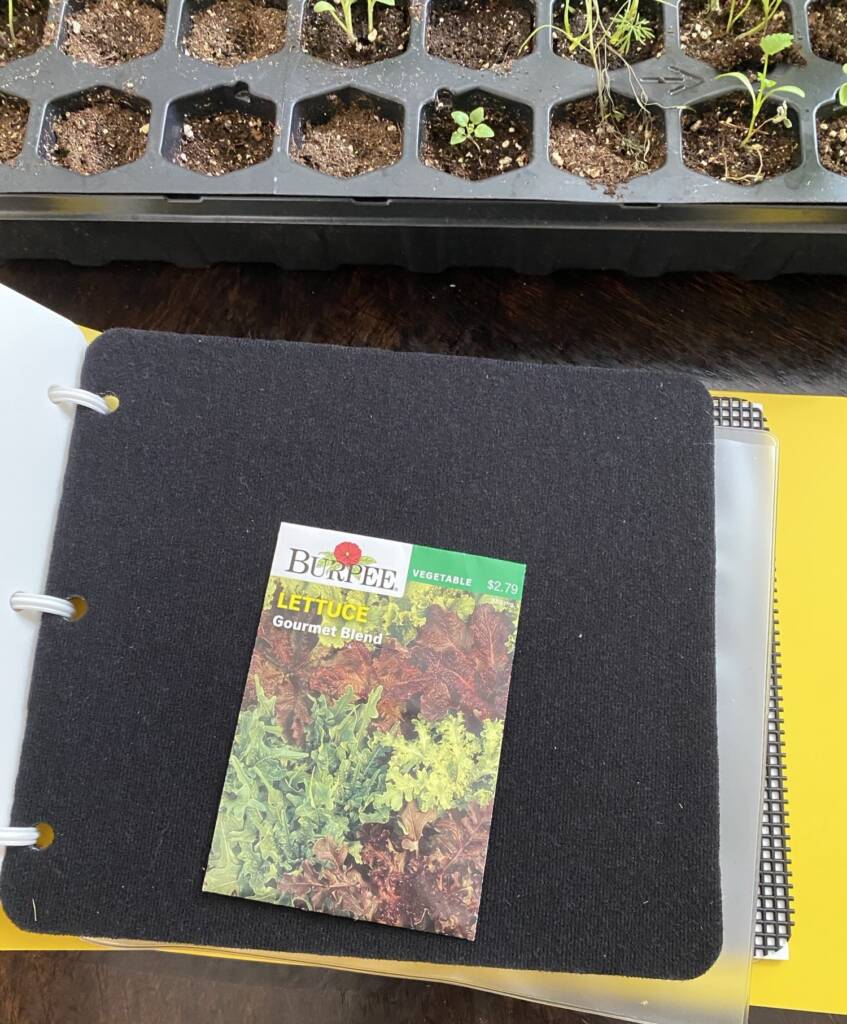

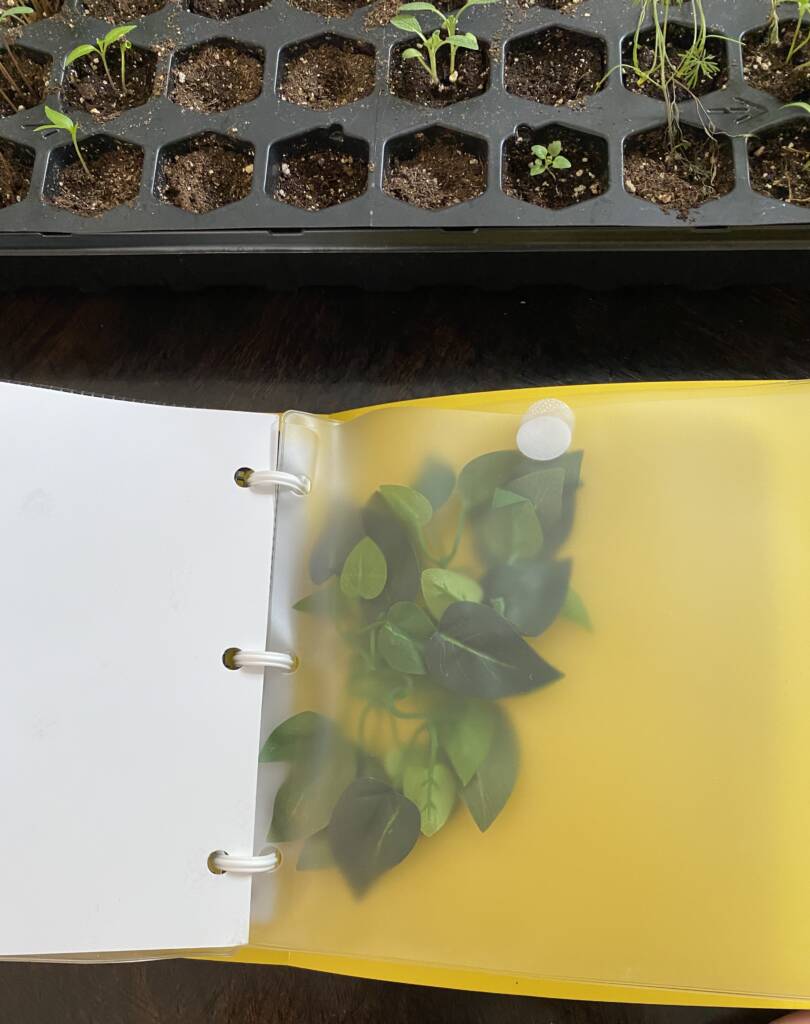
The Value of Creating a of Sensory Gardens for Students with Visual Impairments
1. Stimulating the Remaining Senses
Sensory gardens play a crucial role in compensating for the loss of sight by engaging other senses. The varied textures, scents, sounds, and tastes within a garden setting provide students with a multi-sensory experience, enhancing their overall perception of the world around them.
2. Encouraging Exploration and Mobility
Navigating a sensory garden encourages students with visual impairments to explore and move independently. For a windowsill or desktop garden, students can learn to navigate to that part of the room, find where the tools are kept, and learn the layout of the plants. For an outdoor garden, tactile paths, carefully placed plants, and audible cues can provide a safe and stimulating environment, fostering spatial awareness and mobility skills. Consider adding a large visual landmark or a tactile landmark near your garden space for better navigation to that location.
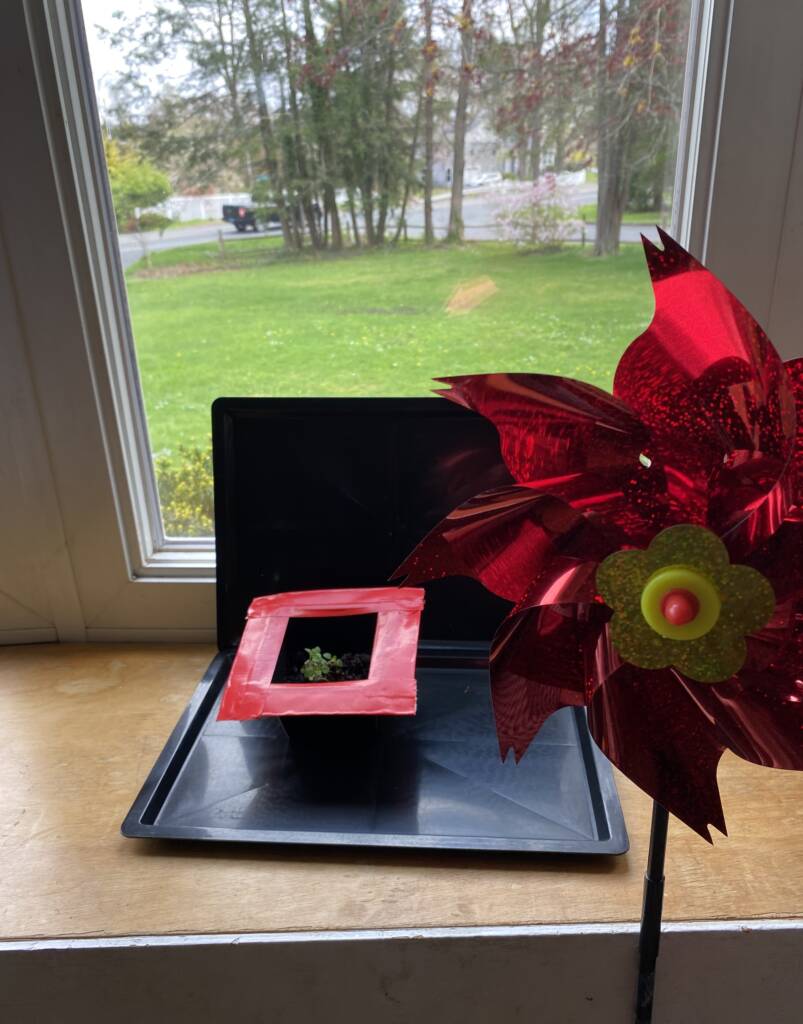
3. Enhancing Cognitive Development
Engaging with the diverse elements of a sensory garden stimulates cognitive development. Students with visual impairments can develop their memory, spatial reasoning, and problem-solving skills through interactive experiences with the garden’s features.
Practical Tips for Teachers
Accessible Design
Ensure the sensory garden is designed with accessibility in mind. Think about if your students would benefit from having a garden in their classroom where regular observation is possible, or if they would benefit from creating the garden in a separate space where they can take trips to the garden and bring more activity and travel into their daily routine. Whether you are working on a windowsill garden or an outdoor garden, implement pathways that are wide enough for wheelchairs and guide students with tactile elements such as textured borders or contrasting surfaces. Also ensure that the lighting fits the needs of your students. It is possible that your plants live on a windowsill but are moved to a tabletop with less glare when students are working with them.
Curriculum Integration: Achieving Multiple Goals with Your Sensory Garden
Seamlessly integrate the sensory garden into your curriculum. Use it as a living classroom for lessons in science, math, language arts, and social studies, and make learning a hands-on and immersive experience. There are so many ways that a garden can be incorporated into classroom curriculum and goals for students.
Tip: Classrooms and conditions vary, if your seeds aren’t growing don’t feel bad bringing in some plants that are already started!
Lesson Plan: Exploring the Sensory Garden
Objective
Students will engage in sensory exploration and experience various sensory stimuli in the garden environment. They will use their senses to observe, touch, smell, and listen to the elements of the garden, promoting sensory awareness, relaxation, and cognitive development.
Target Audience
Students with multiple impairments (physical, sensory, or cognitive disabilities) including vision loss, varying in age and ability levels. This lesson can be an opportunity to collaborate with mainstream school peers who can help guide them through the lesson.
Suggested Materials
- Sensory garden space (either indoor or outdoor)
- Soil and planter
- Water can (adapt as needed)
- A variety of plants (or collected plant leaves) with different textures, scents, and colors (e.g., herbs, flowers, ferns). Seeds, soil, and planter if you are growing plants too!
- Adapted tactile gardening book
- Textured pathways or surfaces for tactile exploration
- Gardening tools (optional)
- Visual aids or communication boards for non-verbal students
- High contrast backgrounds as needed for visual access
Procedure
Introduction (5 minutes)
- Gather students in a designated meeting area and introduce the concept of the sensory garden. Explore tactile or adapted gardening books.
- Explain that today, they will have the opportunity to explore the garden using their senses.
- Emphasize the importance of using their hands, noses, ears, and eyes to discover and enjoy the sensory experiences.
Exploration Activities (15-30 minutes)
1. Touch Exploration
- Guide students to different plants with varying textures, such as smooth leaves, rough bark, or fuzzy stems. Use hand-under-hand and make sure students are willing to touch the plants/leaves rather than insisting on touch.
- Encourage students to gently touch and feel the different textures. Provide verbal descriptions of the textures for non-verbal students.
- Use a bowl of soil to feel the texture of what the plants need to live in. Use a bowl of water or watering can to feel the water plants need.
2. Smell Exploration
- Lead students to aromatic plants such as lavender, mint, or roses.
- Encourage students to take deep breaths and inhale the fragrances. Describe the scents using simple language for non-verbal students.
- Students may also smell the dirt/soil from growing seedlings.
3. Sound Exploration
- Position students near wind chimes, rustling leaves, or pouring water.
- Prompt students to listen carefully to the sounds around them. Encourage them to imitate the sounds they hear or express their reactions verbally or nonverbally.
4. Visual Exploration
- Guide students to observe the vibrant colors of flowers, leaves, and other garden features. For low vision students or students with CV, use a contrasting background color to present one plant item at a time. Consider using a light box if that is a visual support for your student. Allow for extra visual processing time.
- Use descriptive language to highlight the colors and shapes present in the garden. Offer visual aids or tactile representations for visually impaired students.
Gardening Activity (15 minutes)
- For students capable of engaging in hands-on activities, provide small gardening tasks such as planting seeds, watering plants, or arranging flowers in pots.
- Offer adapted gardening tools and support as needed to ensure participation from all students.
- Encourage students to use their senses while gardening, such as feeling the soil, smelling the plants, and observing the growth process.
Conclusion and Reflection (10 minutes)
- Gather students back in the meeting area.
- Allow students to share their experiences and favorite sensory discoveries from the garden. You can use a switch with recording capability for non-verbal students to share. You can also offer a choice of two plants that were in the lesson and let the students pick which one they preferred.
- Reflect on the sensory exploration by asking questions:
- What did you enjoy most about exploring the sensory garden?
- Which sense was your favorite to use in the garden, and why?
- How did the sensory garden make you feel?
- Express appreciation for their participation and encourage them to revisit the sensory garden in the future.
Consider Visual Adaptations
- For Low Vision students, use high contrast colors, large print, and big landmarks during this lesson. Consider using a CCTV or other magnification if needed.
- For CVI students, be intentional about reducing visual complexity, and choose a color to anchor visual attention. Consider using a lightbox if needed.

Please Note
- Ensure the safety and accessibility of the garden environment for all students, including those with mobility impairments or sensory sensitivities.
- Adapt activities and materials based on individual student needs and abilities.
- Seek assistance from support staff or volunteers as needed to facilitate student engagement and ensure a positive experience for all participants.
Extension Activities
Consider extending this lesson plan to work with the sensory garden as part of a daily or weekly routine to meet student specific goals such as:
Matching: Students can work on matching any of the objects relating to the garden: planter cups, gardening tools, flowers, plant names, etc. They can match plant shapes with real leaves and plants or printed representations. They can match textures if they are open to that. You can also compare and contrast weight of some plants.
Tolerating textures: Starting with hand-under-hand, students can explore many textures within even a small windowsill garden. Soil can be explored, seeds of many kinds, leaves, petals, sand, stones, mulch, grass, etc. Water can be explored by a spray bottle, pitcher of water, or a sponge/towel that is dipped on water.
Color: Use high contrast colorful materials for low vision students working on learning their colors.
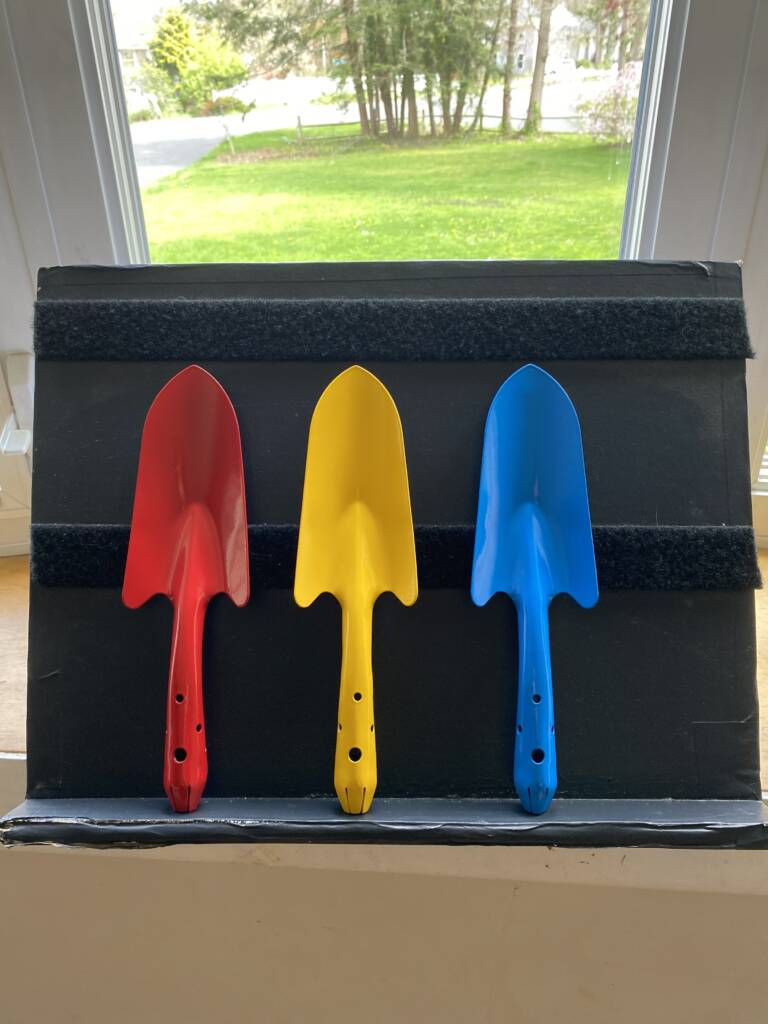
Counting: Counting planters, plants, plant cups, gardening tools, water squirts/pours can all be done auditorily or visually with the right visual accommodations. You can use touch exploration as a way to meet counting goals too.

Same, Different: There are many ways to practice “same, different” using plants and garden tools. Textures, shapes, size, and type of tool are all ways that “same, different” can be practiced with your garden.
Turn Taking: Students can take turn watering the plants, smelling them, feeling the soil, and any other part of taking care of the garden.
Visually Attending: Routinely reducing the visual complexity of the sensory garden can support students in visually attending to objects and plants that are in the garden.
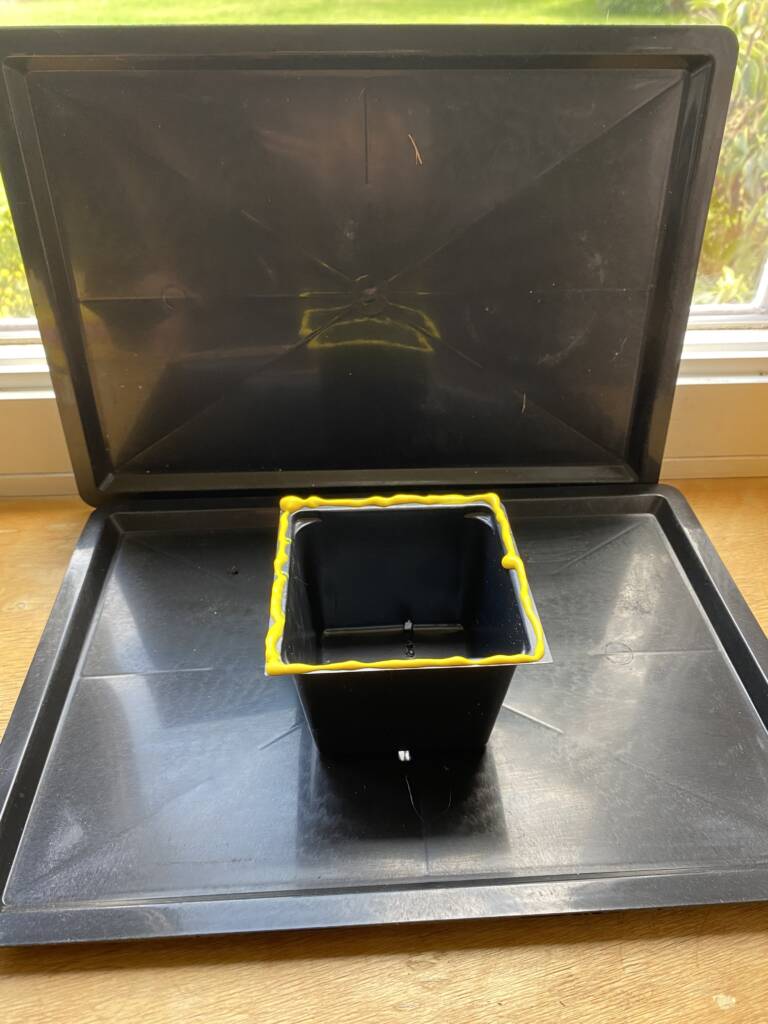
Addition and Subtraction: Using familiar garden materials for math problems can be a fun way to work on addition and subtraction with manipulatives. It can also be used for many functional word problems (ie: how many cups of water fill the watering can?)
Measuring: Break out the adaptive measuring cups or spoons to incorporate measuring skills into your gardening activities. Measure the amount of water you use or the spoil you put in each planter. You can measure how tall your plants are, or how much they grow in a month. You can measure how long leaves or other parts of the plants are. Consider using a CCTV if using a ruler for better visual supports.
Letters/numbers: Students can use the plant markers to practice letters or numbers, either in print or braille.

In addition to meeting student specific goals, there are many other fun extension activities
- Create sensory art projects inspired by the garden exploration, such as leaf rubbings or scented flower collages.
- Incorporate storytelling or poetry writing based on the sensory experiences in the garden.
- Plan regular visits to the sensory garden as part of ongoing sensory stimulation and relaxation activities.
- Take flower donations from the school community and arrange flower bouquets to give to school staff, a local nursing home, or decorate the classroom.
Purchase options for materials referenced in this article and lesson plan:
- Small white board or chalk board for writing large print plant names

